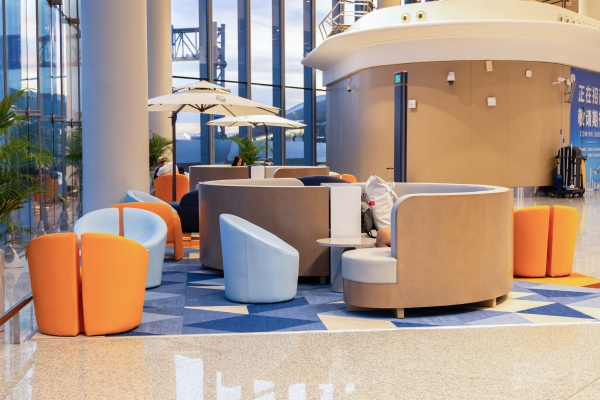In modern airport design, waiting areas not only provide temporary accommodation for passengers but are also a crucial component of the airport service experience. For business-to-business buyers, choosing airport waiting sofas that are suitable for different waiting areas not only impacts space utilization and passenger comfort, but also overall operating and maintenance costs.
1. Customize and differentiate designs based on functional zoning.
An international airport is typically divided into multiple functional areas, including domestic/international departures, gate waiting areas, VIP lounges, pre-security transfer areas, and baggage claim areas. The user demographics and behavior patterns of these areas vary significantly, so airport waiting sofa configurations should be differentiated:
Gate areas: These are high-density areas. Choose tiered chairs or modular sofas with a stable structure, strong load-bearing capacity, and ample seating. These sofas can be equipped with features such as USB charging ports, side tables, and backpack hooks to enhance practicality.
VIP lounges/business class lounges: Emphasize comfort and privacy. High-back single sofas, modular partitions, and soft upholstered materials can be used to create a tranquil and relaxing atmosphere.
Pre-security transit/temporary waiting areas: For shorter stays, simple seating arrangements with easy-to-clean, quickly movable seating are recommended, balancing flexibility and aesthetics.
Baggage claim areas: For open, less frequently used spaces, short-term waiting sofas with backrests but no armrests can be used to facilitate standing up and moving luggage.
2. Flexible Combinations and Optimized Space Utilization.
With the ever-changing flight dynamics and passenger flow, airport waiting sofas should also feature a degree of mobility and modularity:
L-shaped, U-shaped, or back-to-back modular sofas can be used to adapt to irregular spaces.
Detachable/joint structures facilitate flexible area layout adjustments.
Integrated side tables combined with sofas effectively reduce floor space and improve space efficiency.

3. Pay attention to passenger behavior and user experience details.
Modern passengers' waiting experience is no longer simply about having a place to sit; they expect comfort and convenience. Therefore, airport waiting sofa design should be tailored to user behavior:
Add personal privacy partitions or high-back chairs to accommodate quiet work and phone calls;
Reserve power outlets and wireless charging modules to enhance charging convenience while waiting;
Take into account the habits of passengers with large luggage, such as bag hooks and under-luggage storage.
An efficient, comfortable, and aesthetically pleasing waiting area often relies on a carefully designed seating system. Airport waiting sofas are no longer a "standard configuration" but a systematic project that balances space management, passenger experience, and brand image. Differentiating configurations based on the needs of different areas is key to achieving a win-win situation for passenger satisfaction and operational efficiency.